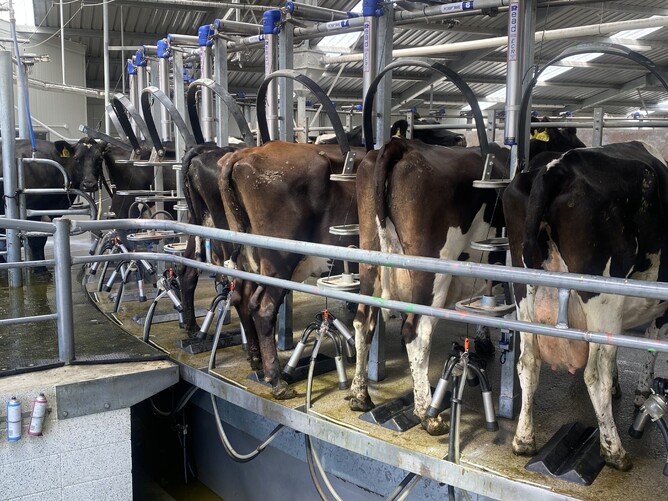It is not uncommon for vets to tell us that some of their farmers are reluctant to have a tail score performed on their herd. It is a sensitive subject that is probably driven by the number of prosecutions that have occurred in recent years.
Tail scoring a herd doesn’t imply there is a problem, it is simply a monitoring tool, like herd testing or BVD bulk milk monitoring.
How is it done?
A trained vet or tech will visually inspect every tail, as well as touch them to assess any damage.
They will make note of any abnormalities, classifying the damage as deviated, shortened, or as trauma or swelling.
It is a quick job and for a rotary, they are typically carried out during milking, for herringbones they may get you to run them in the AB race afterward.
After the whole herd has been scored, they will collate the results. The first time a herd is scored they are taking a baseline, creating the benchmark for the farm itself, and every score after that can be compared to that base.
Generally, scoring will take place annually at a consistent time, for a good comparison and assessment of what might have changed.
If you’re using WelFarm they will enter them into the portal where you can see the benchmarks which compare your results to other farms in the region and across the country.
If after a tail score, you have any concerns about the results, your vet can help you put a plan in place to reduce any damage or injuries that may be occurring whether they be from the infrastructure or any handling techniques. The type of abnormalities detected will provide clues as to what could be causing the problems.
There is limited information on what causes deviations in tails, but it has been suggested that it may be caused by mechanical damage in the milking shed or collecting yard, or inappropriate handling. But without scoring your herd and investigating the results, it is hard to determine what could be causing problems on your farm.
What can we see in the data?
During the 2022/23 season around 60% of farms enrolled in WelFarm had had a tail score performed.
And, consistent with research in this area, 20% of cows had some form of tail damage recorded.
Of the abnormalities detected, 54% are due to deviations and 28% are due to shortenings, which will reduce over time as the older cows are culled from herds and younger cows no longer have their tails routinely shortened.
Tail scoring is a valuable tool for dairy farmers to identify issues early, ensure animal welfare, and maintain productive herds. Tail damage is painful for cows and should be avoided at all costs. The tail tells a story, what are the ones on your farm saying?

